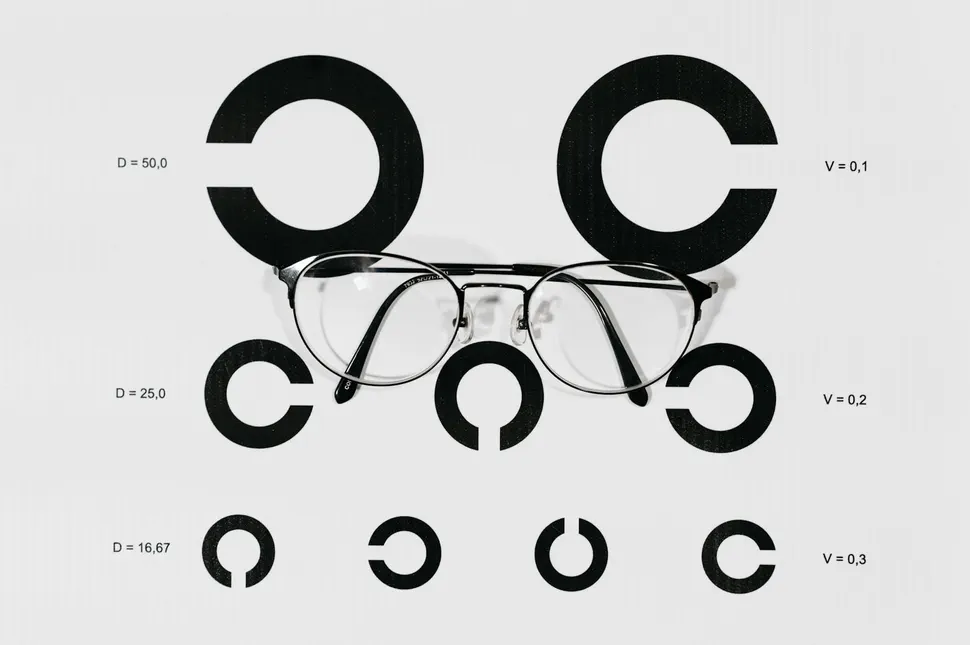Top-down vs. Bottom up Privacy
- Abhishek Tiwari
- Research
- 10.59350/wxmkd-tza51
- Crossref
- October 17, 2024
Table of Contents
Tech companies and large consumer businesses are grappling with how best to protect end-user data while maintaining pace of innovation and competitive edge. Two distinct approaches have emerged: top-down and bottom-up privacy. Understanding these approaches is essential for anyone involved in privacy engineering, product development, or driving tech policy decisions. In this blog post, we will deep dive into the nuances of each approach, examine their strengths and weaknesses, contrast aspects of privacy such proving compliance, auditing, and monitoring.
Top-Down Privacy: Compliance-Driven Approach
The top-down approach to privacy is fundamentally driven by regulatory compliance. This model typically emerges in response to legal requirements such as the GDPR, CCPA, or industry-specific regulations such as HIPPA. Organizations adopting this approach often implement privacy measures as a means to mitigate legal and reputational risks associated with customer data handling.
In practice, top-down privacy manifests as standardised processes across an organisation. These might include comprehensive privacy policies, user consent frameworks, and data subject access request (DSAR) procedures. While this approach ensures a baseline level of compliance, it often results in what privacy professionals critically refer to as “checkbox privacy” – a scenario where meeting minimum legal requirements takes precedence over comprehensive privacy protection.
One of the most significant challenges in the top-down model is the potential for privacy leaks resulting from the disconnect between interpretation and implementation, or theory versus practice. For instance, a company might have a well-crafted privacy policy that outlines strong data protection measures, but failures in implementation – such as inadequate access controls or insufficient data encryption – can lead to privacy breaches. This gap often stems from a lack of integration between legal teams crafting policies and technical teams responsible for implementation.
The Challenge of Regulatory Misalignment
One of the most significant challenges in implementing a top-down privacy approach is the lack of standardization and misalignment between different privacy regulations. This misalignment creates a complex and often contradictory landscape for businesses operating across multiple jurisdictions.
For instance, while the EU’s GDPR and California’s CCPA share some common principles, they differ significantly in their specific requirements. The GDPR’s concept of “data controller” and “data processor” doesn’t directly translate to the CCPA’s definition of “business” and “service provider.” Similarly, the mechanisms for obtaining user consent, the scope of data subject rights, and the requirements for data breach notifications vary between these and other privacy regulations.
This lack of regulatory harmonisation leads to increased compliance costs as businesses must invest in separate compliance programs for each jurisdiction. It also creates operational complexity, especially for global businesses that must navigate a patchwork of regulations. This can result in siloed data management practices or the need to apply the strictest standards globally, which may be operationally inefficient.
Furthermore, contradictions between regulations can create legal uncertainty, making it difficult for businesses to be confident in their compliance status. The need to comply with multiple, sometimes conflicting regulations can also slow down product development and innovation, particularly for smaller companies with limited resources.
Lastly, different regulatory requirements can lead to inconsistent privacy experiences for users based on their location, potentially causing confusion and eroding trust. These challenges underscore the limitations of a purely top-down, compliance-driven approach to privacy and highlight the need for a more holistic, principle-based approach to privacy that can adapt to evolving and diverse regulatory requirements.
These challenges underscore the limitations of a purely top-down, compliance-driven approach to privacy. While compliance is crucial, the complexity and inconsistency in the regulatory landscape highlight the need for a more holistic, principle-based approach to privacy that can adapt to evolving and diverse regulatory requirements.
A critical aspect of any privacy strategy is the ability to prove compliance, conduct thorough audits, and maintain ongoing monitoring. In this approach, proving compliance often revolves around documentation and process adherence. It relies heavily on maintaining detailed records of privacy impact assessments, data processing activities, consent management, and may require demonstrating that employees have completed required privacy training programs.
For auditing top-down model follows a checklist-based methodology, verifying that each regulatory requirement is met. It often involves periodic reviews of data handling practices against written policies and regulatory standards. Whereas monitoring often tracks key compliance metrics, such as response times to data subject requests or the number of reported data breaches, etc.
It is fair to say, that the strength of this approach lies in its clear alignment with regulatory requirements, making it easier to demonstrate compliance to regulators. However, it may struggle to capture nuanced privacy risks that fall outside the scope of explicit regulatory mandates.
Bottom-Up Privacy: Privacy by Design Ethos
In contrast, the bottom-up approach embodies the principle of “privacy by design.” This philosophy(see here), pioneered by Dr. Ann Cavoukian, advocates for embedding privacy into the core architecture of systems and processes. Rather than treating privacy as a compliance checkbox, bottom-up privacy views it as a fundamental design principle. In this approach, privacy is an essential component of functionality or embedded in functionality, not an add-on or overlay.
Companies adopting this approach often go beyond regulatory requirements, implementing advanced privacy-enhancing technologies (PETs) such as differential privacy(see here), homomorphic encryption (see here), zero-knowledge proofs, end-to-end encryption, local processing of sensitive data, etc. These technologies aim to provide strong privacy guarantees while maintaining the utility of data.
A key strength of the bottom-up approach lies in its foundation in mathematical frameworks, which provides the opportunity to apply formal reasoning to privacy guarantees. This mathematical underpinning allows privacy engineers to prove, in a rigorous and verifiable manner, that certain privacy properties hold true for their systems.
For instance, differential privacy, a cornerstone of many bottom-up privacy approaches, is built on a mathematical definition of privacy. This allows engineers to quantify the exact privacy guarantees provided by their systems and to reason formally about the cumulative privacy loss over multiple data releases. Similarly, zero-knowledge proofs, another tool in the privacy engineer’s arsenal, rely on complex cryptographic protocols that can be formally verified.
The ability to apply formal reasoning to privacy properties offers several advantages. It allows for provable guarantees, unlike heuristic approaches, formally reasoned privacy mechanisms can provide mathematical proofs of their effectiveness, offering stronger assurances to both users and regulators. It also enables composability, allowing privacy engineers to reason about the composition of multiple privacy-preserving mechanisms, understanding how they interact and what guarantees hold when they are combined.
Furthermore, mathematical frameworks often allow for the quantification of privacy loss or protection, enabling more precise privacy budgeting and risk assessment. Formal proofs can be independently verified, increasing transparency and trust in privacy-preserving systems.
Unlike top down approach, bottom-up approaches take a more holistic view of compliance, auditing, and monitoring, often leveraging its mathematical foundations. Proving compliance with this approach requires significant initial work to translate these formal guarantees into terms that align with regulatory requirements remains but once completed it can be fully automated.
Auditing in bottom-up approaches takes a more comprehensive approach, examining not just regulatory compliance but also the effectiveness of privacy controls in real-world scenarios. It may involve advanced techniques such as data flow audits, privacy-focused penetration testing, or formal verification of privacy properties. This approach can apply formal reasoning to verify that implemented systems match their theoretical privacy guarantees.
Monitoring in bottom-up approaches often involves continuous, automated monitoring of privacy metrics and potential vulnerabilities. It may use advanced techniques like privacy-preserving measurements (see here) to monitor data usage patterns without compromising individual privacy and can leverage formal methods for runtime verification of privacy properties.
However, bottom-up approaches are not immune to privacy leaks. Even when a sound mathematical framework describes a privacy-preserving system, implementation errors can lead to vulnerabilities. For example, a differential privacy system might be mathematically proven to provide certain privacy guarantees (see here), but a flaw in the implementation of the noise addition mechanism could compromise these guarantees. Such leaks are often more subtle, can be caused by a bug in implementing or it’s dependency, and can be harder to detect, requiring sophisticated auditing and testing methodologies.
Lastly, it’s important to note that the application of formal reasoning in real-world systems can be challenging. Translating mathematical guarantees into practical implementations requires careful engineering, and the assumptions underlying formal proofs may not always hold in complex, dynamic environments.
Comparing the Approaches
| Aspect | Top-Down (Compliance-Driven) | Bottom-Up (Privacy by Design) |
|---|---|---|
| Primary Driver | Legal requirements | Ethical considerations and user trust |
| Approach | Reactive | Proactive |
| Focus | Meeting minimum standards | Exceeding standards, Innovation |
| User Experience | Can be intrusive (e.g., consent popups) | Aims to be seamless and empowering |
| Implementation | Often uniform across organization | Can vary by product or feature |
| Proving compliance | Checklist based but tedious | Significant work at start but automated afterwards |
| Innovation | Limited to compliance scope | Encourages novel privacy solutions |
Blended Approach
In my experience, the most effective privacy strategies often integrate elements of both top-down and bottom-up approaches. This blended approach starts with privacy by design principles as a foundation, ensuring that privacy is considered from the outset in all projects and processes. It then layers compliance-driven measures on top of this foundation to meet specific regulatory requirements.
This integration allows organizations to treat regulatory requirements as a baseline rather than an end goal. By fostering a culture of privacy innovation, companies can develop novel privacy-enhancing technologies that go beyond compliance, differentiating themselves in an increasingly privacy-conscious market.
Moreover, this blended approach is better equipped to address the challenges of privacy leaks and the utility-privacy trade-off. By combining the systematic processes of top-down approaches with the innovative solutions of bottom-up methodologies, tech and consumer businesses can create more robust, adaptable privacy frameworks.
Conclusion
The future of privacy in tech likely lies not in choosing between these approaches, but in finding creative ways to effectively blend them, ensuring legal compliance while striving for the highest standards of privacy protection.
References
- A. Tiwari , "Mathematical Guarantee," Abhishek Tiwari, 2024, doi: 10.59350/ghs12-1vq60.
- A. Tiwari , "Privacy Preserving Measurement," Abhishek Tiwari, 2024, doi: 10.59350/fnpfz-3v466.
- A. Tiwari , "Exploring Homomorphic Encryption with Python," Abhishek Tiwari, 2024, doi: 10.59350/vr6dm-7r102.
- A. Tiwari , "Differential Privacy: A Primer," Abhishek Tiwari, 2024, doi: 10.59350/t6p9d-y6y38.
- A. Cavoukian , "Privacy by Design: The 7 Foundational Principles," , 2011, [Online.] Available: https://privacy.ucsc.edu/resources/privacy-by-design---foundational-principles.pdf .


